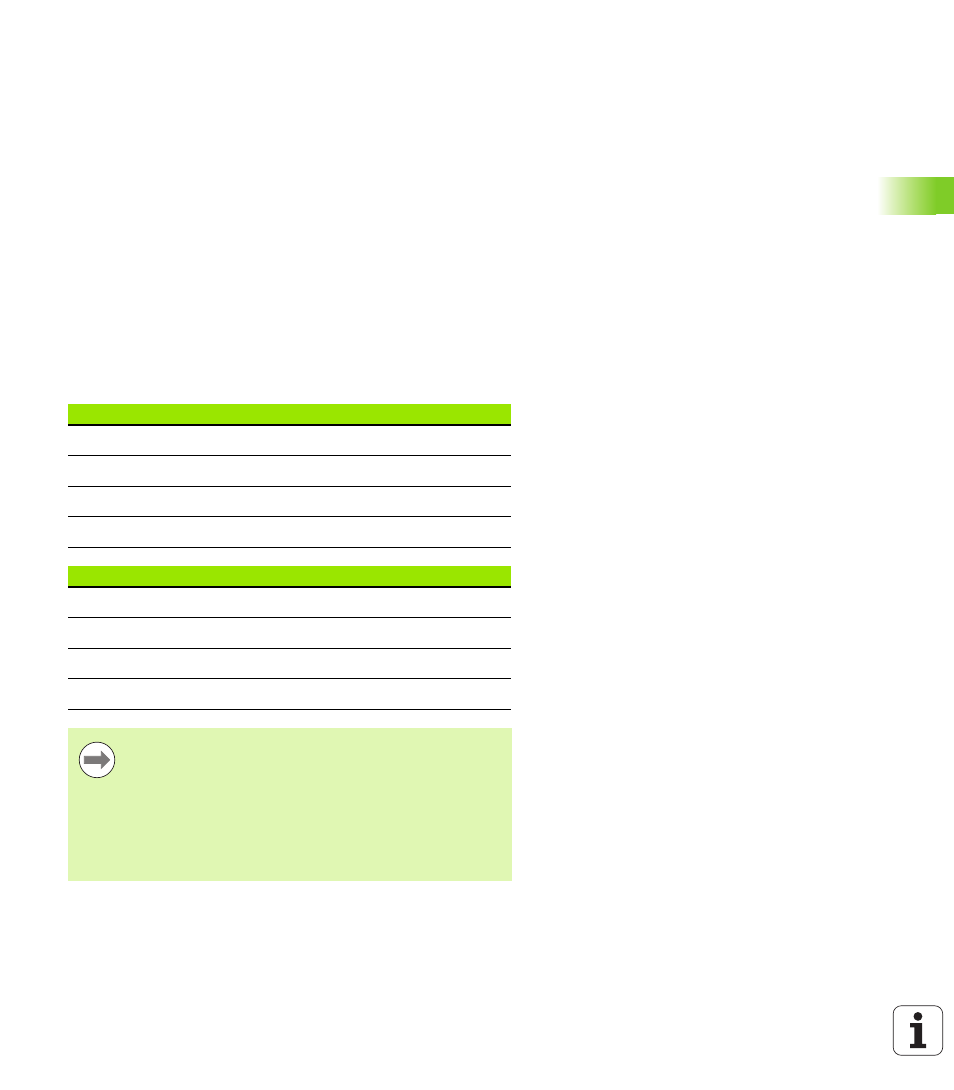5 fundamentals of thread milling, Prerequisites – HEIDENHAIN iTNC 530 (34049x-08) Cycle programming User Manual
Page 119

HEIDENHAIN iTNC 530
119
4.5
Fundamentals
of
thr
ead
milling
4.5 Fundamentals of thread milling
Prerequisites
Your machine tool should feature internal spindle cooling (cooling
lubricant at least 30 bars, compressed air supply at least 6 bars).
Thread milling usually leads to distortions of the thread profile. To
correct this effect, you need tool-specific compensation values
which are given in the tool catalog or are available from the tool
manufacturer. You program the compensation with the delta value
for the tool radius DR in the TOOL CALL.
The Cycles 262, 263, 264 and 267 can only be used with rightward
rotating tools. For Cycle 265 you can use rightward and leftward
rotating tools.
The working direction is determined by the following input
parameters: Algebraic sign Q239 (+ = right-hand thread / – = left-
hand thread) and milling method Q351 (+1 = climb / –1 = up-cut).
The table below illustrates the interrelation between the individual
input parameters for rightward rotating tools.
Internal thread
Pitch
Climb/Up-cut Work direction
Right-handed
+
+1(RL)
Z+
Left-handed
–
–1(RR)
Z+
Right-handed
+
–1(RR)
Z–
Left-handed
–
+1(RL)
Z–
External thread
Pitch
Climb/Up-cut Work direction
Right-handed
+
+1(RL)
Z–
Left-handed
–
–1(RR)
Z–
Right-handed
+
–1(RR)
Z+
Left-handed
–
+1(RL)
Z+
The TNC references the programmed feed rate during
thread milling to the tool cutting edge. Since the TNC,
however, always displays the feed rate relative to the path
of the tool tip, the displayed value does not match the
programmed value.
The machining direction of the thread changes if you
execute a thread milling cycle in connection with Cycle 8
MIRROR IMAGE in only one axis.
